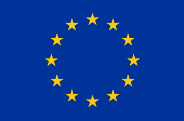
Safe non-food consumer Products in the EU and China
First and foremost, it is the manufacturer who has a primary responsibility since the manufacturer controls all key stages including design and production. Others in the chain of distribution are also required to carry out certain checks and individual EU Member States appoint market surveillance and border control officials who check to ensure the product safety rules are followed.
There is no requirement to seek approval in advance before supplying products
A harmonised standard is a standard that has been acknowledged by the EU Member States to provide “presumption of conformity” with a certain directive.
This means that if a product meets the requirements of a harmonised standard, then the manufacturer can presume that their product meets (some of) the essential requirements of that particular directive.
It is not a requirement to follow a harmonised standard, however, it is usually easier to do so as other standards do not provide presumption of conformity.
In the short term the effects will be minimal, as product rules and conformity assessment will remain the same for both the UK and EU for most product groups, but the following changes have taken place:
There is the possibility that more will change in the future although this is unlikely to happen in the short term.
As a manufacturer, there are certain rules that need to be followed when placing a product on the market. There are some basic questions in the form of a checklist that you could create to reduce the risks of producing non-compliant and dangerous products. Ask yourself:
Detailed information on product safety and requirements in the EU can be found on the European Commission’s website.

This website was created and maintained with the financial support of the European Union. Its contents are the sole responsibility of SPEAC project and do not necessarily reflect the views of the European Union.